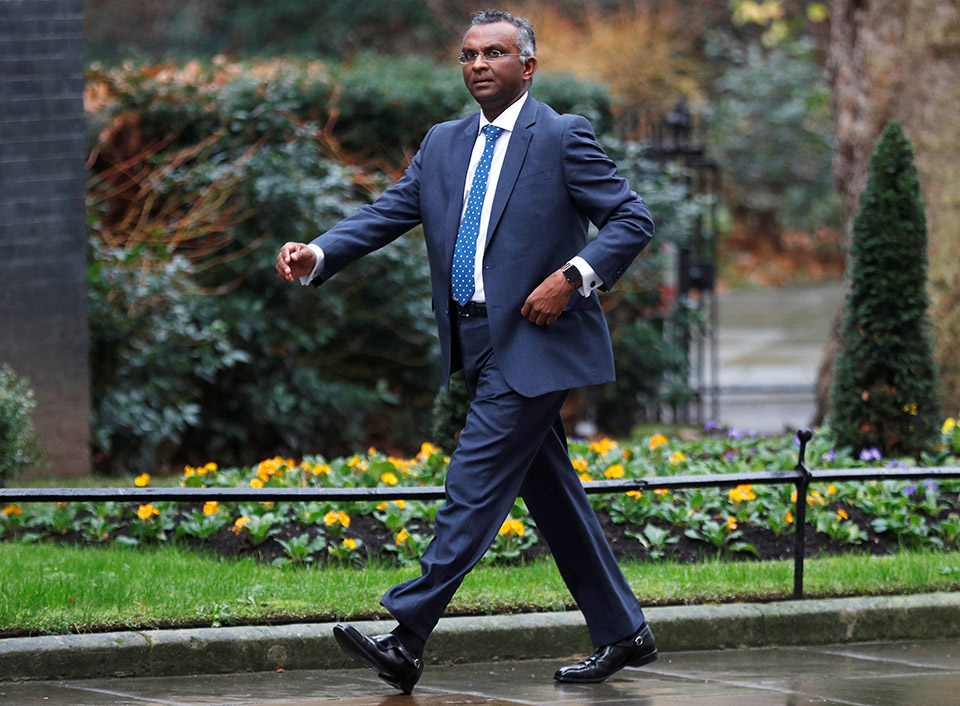Citi chief executive Jane Fraser’s move to appoint Vis Raghavan as head of banking sent a message that she is trying to win market share, while continuing to control costs in an underperforming investment banking franchise.
The price of replacing Raghavan’s JPMorgan stock options and providing an incentive to move in the form of any bonus guarantee will not be disclosed by Citi.
It is likely to be a hefty figure, though even cost-management zealots among Citi investors and stock analysts would probably look past an eye-watering amount for an individual, given that Raghavan has a strong track record as a manager at JPMorgan, perhaps the leading investment bank in the world.
But there are hidden costs from any attempt to revive an ailing banking franchise that are often under-appreciated by investors and analysts.
One expense that may be anticipated but is hard to quantify comes in the form of further hiring by the new manager who has been appointed to build market share – often by bringing in trusted former colleagues.
Raghavan reportedly deployed a selective policy of allowing investment bankers from JPMorgan to leave for rival firms without making counter-offers to match whatever they were being paid by the new employer.
That is a tactic that might work at JPMorgan, which is already a leader in capital market issuance and advisory work, with compensation packages at the high end of the range for staff who want to stay in banking, rather than moving to private equity firms or funds.

If Raghavan wants to persuade other bankers to join him in taking a chance on a Citi comeback, he may have to pay up, however, and JPMorgan could deploy a tactical switch of its own to keep dealmakers in place by matching any speculative offers, further driving up hiring costs.
Personal relations
Any wave of hiring could undermine morale and motivation for existing Citi bankers, who will be well aware that many new arrivals are on attractive bonus guarantees at a time when legacy employees are feeling the effect of Fraser’s broader cost-cutting.
Raghavan will also have to tread carefully in managing his relationship with Andrew Morton, the head of Citi’s markets business.
That does not just mean establishing cordial personal relations, but also trying to enlist the support of trading-business heads in promoting the attempt to win greater issuance and advisory market share.
There is an even bigger disparity between the scale of Citi’s markets and banking divisions than at rival US banks. Morton’s markets group generated revenue of almost $19 billion last year and income of $4 billion. The banking division at Citi produced less than a quarter of the trading revenue – at $4.5 billion – and actually made a loss.
A collaborative approach to capital deployment across business lines could be a big boost for an attempt to build advisory and issuance market share
An attempt to build revenues in Raghavan’s speciality of dealmaking and issuance does not necessarily have to elevate the hidden cost that is the biggest threat to winning profitable trading market share – capital consumption in the form of increased risk-weighted assets for the bank.
But a collaborative approach to capital deployment across business lines could be a big boost for an attempt to build advisory and issuance market share.
Many core customers for banks – such as private equity firms and hedge funds – interact with their sell-side counterparts on multiple levels.
A bank that is winning customer loyalty by providing more competitive terms in one business line can at least hope to generate more activity in another area.
Good service in prime broking for hedge funds might be expected to produce more revenue in capital-market businesses where funds are important investors, such as convertible issuance (where Raghavan built his career), for example.
An attempt to win share in both these businesses could therefore seem like a chance for Raghavan and Morton to begin a meaningful friendship.
There is certainly plenty of scope for Citi to build prime broking market share, an area that Morton has targeted for growth.
Collaboration
A few days after Raghavan’s appointment was announced in late February, the Bank for International Settlements released its quarterly review of markets. It noted that hedge funds in aggregate are heavily reliant on three prime brokers – Goldman Sachs, JPMorgan and Morgan Stanley – which each had more than 1,000 US-registered fund clients at the end of 2022.
Citi was well behind at just over 250 fund clients, and ranked after UBS as well as Bank of America, its fellow member of the US big five banks.

It is easy to picture Morton and Raghavan collaborating in an assault on two fronts on the hedge fund market.
It is equally easy to envisage a future decision by Morton to pull back from full-scale equities competition to focus on Citi’s traditional strengths in fixed income, however.
Regulators have made it clear that they are on the alert for signs that banks competing for prime-broking share do not repeat the mistakes Credit Suisse made in securing business from Archegos Capital with lax collateral management.
Citi itself is under scrutiny by regulators for risk-management weaknesses, so a combination of closer oversight of prime-broking practices and competing demands for capital allocation might make a push to win equity sales and trading market share seem less attractive.
And that could cause tension rather than constructive collaboration between the markets and banking groups at Citi, whose heads both now have a direct reporting line to Fraser.
Citi is not alone in trying to rebuild market share this year, of course.
Nominal logic
A recent appointment that drew less attention than Raghavan’s shift from JPMorgan may also have implications for relative risk appetite, and potential hidden costs.
Pedro Goldbaum, former co-head of rates trading at Citi, is joining Deutsche Bank to spearhead a move to boost revenue generation from products such as interest-rate swaps in the US and Latin America.
As with most new hires, there is a nominal logic behind this move: Deutsche sees the potential to balance its European revenue with more US income and to reduce its reliance on credit trading by increasing its rates market revenue.
There are also echoes of past failures at Deutsche, however.
The firm made what seemed like a successful bid to win US rates trading market share in the years approaching the global financial crisis of 2008, only to execute a full-scale retreat when investors – and top executives at Deutsche – finally began to focus on the capital consumption of swap and government bond dealing.
This time might be different, of course. But plans to win market share from the new global top three for investment banking and trading revenue – JPMorgan, Goldman and Morgan Stanley – often seem to rely on some fairly heroic assumptions about both cost management and revenue growth.
Fraser, in an appearance at a conference in early March, said that Citi’s restructuring is going faster than expected and has already reduced the ratio of revenue producers to non-producers.
She also pledged that “we are not going to make the mistakes we made in the past”.
Investors in Citi will have to hope that a chief executive with a background in management consulting, rather than banking, will do a better job than her predecessors – across many different banks – at identifying and managing the hidden costs of investment banking growth.




